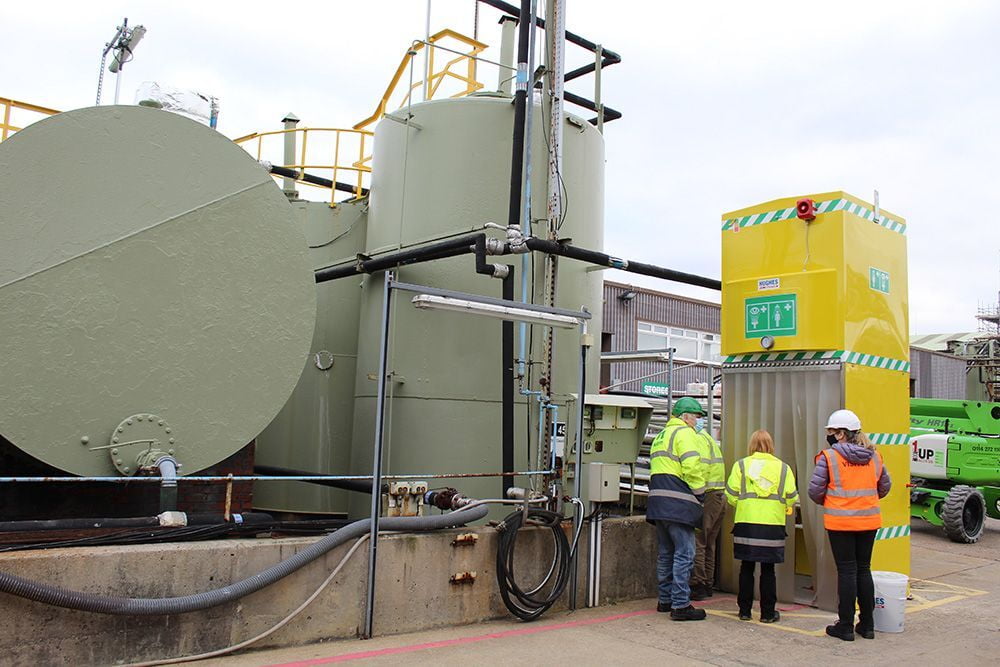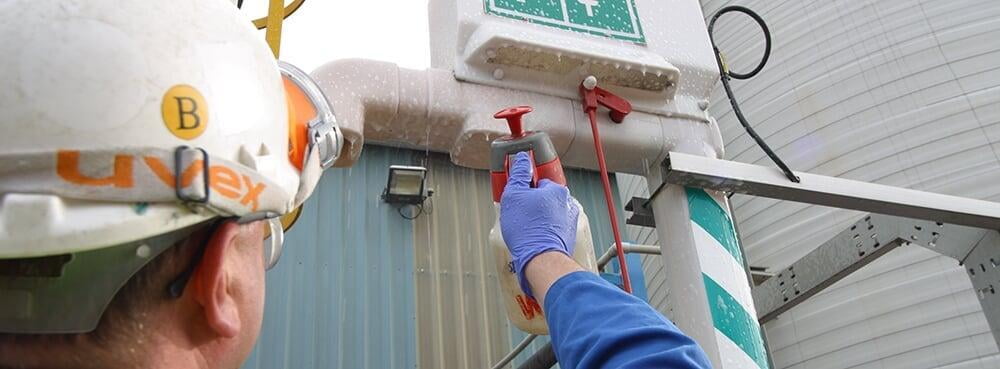Maintenance
Regular servicing and maintenance of emergency safety shower and eye/face wash equipment is essential to ensure correct functionality. All services and weekly activations must be recorded to ensure a full history is maintained as per ANSI standard requirements.
Weekly activation
All equipment should be visually inspected and activated at least once a week to ensure it is operating properly, to clearthe line of any sediment build up and check that the water runs clear.
Where fitted, the external test handle can be used for ease.
Watch the video to learn more about the importance of weekly activation tests, how to perform them and what to look out for.
Weekly activations will:
- Clear the line of any sediment build-up preventing proper operation
- Reduce the risk of harmful bacteria growth
- Ensure this life-saving equipment works when needed
- Keep track of your weekly activations and note any areas that require maintenance.
Checks should include:
Activation Test:
- Does the shower or eye wash activate properly? The unit should go from "off" to "on" in 1 second or less. The supply valve must remain open after activation until intentionally closed.
- Is there a steady flow of water? Ensure the stream does not halt or stutter. For eye washes, check the streams of water are at the same height and are not erratic.
- Is the water dirty or cloudy? Flush the equipment until the water is clear.
Visual inspection
- Is the path to the equipment well-lit and clear of obstacles?
- Is the shower and/or eye wash clearly visible and demarcated?
- Is all electrical equipment at least 3 feet away?
- Is the equipment in good working order? Check for leaking water or moisture, damage to the unit, and clean components if necessary.
Not only will performing this task give you peace of mind that your emergency equipment is in full working order, it will also ensure you remain compliant. If a shower fails to function correctly or further injures an employee you could face significant fines and/or imprisonment.
Servicing and cleaning
Hughes recommend equipment be serviced and cleaned regularly, and at least every 6 months. To purchase spare parts call us on (403) 239-8570 or email sales@spswest.com.
Periodic analysis of the water quality is recommended to ensure there is no build-up of harmful bacteria.
Regular cleaning of the outside of the emergency equipment is recommended. Abrasives or solvents must not be used toclean the unit as this can damage the surface or affect the instruction stickers.
Safety showers:
- Remove the shower head periodically to clean, disinfect and ensure any build-up of debris or bacteria is removed.
- Remove the shower rose and replace after flushing.
Tank Showers:
- Tank showers should be internally disinfected to combat legionella and other bacteria growth.
- The water supply is isolated, the shower rose, and filter is removed and placed in a container of 50 PPM dissolvedFree Chlorine for 1 hour.
- The lid is removed, and the tank is cleaned then refilled with clean water. Chlorine release agent is added to the waterto gain 50 PPM of Free Chlorine for 1 hour.
- The eye bath is operated to hold chlorinated water in the feed line. After being left for one hour, the system is emptiedand flushed with clean water before being refilled. The rose and filter are replaced.
Eye and eye/face washes:
- The fine mesh strainers should be cleaned regularly, particularly in the first 6 months of service as there may becontamination of the water from dirt, jointing compounds, etc. which may have remained in the pipework followinginstallation, despite the recommended flushing procedure.
- Nozzles should be cleaned regularly; the frequency will depend on the ambient conditions of the installation.
- Diffusers can be unscrewed for cleaning.
- To clean the ‘Y’ strainer filter basket remove the strainer housing using a 22mm socket. The filter basket can befound inside the housing and can easily be removed for cleaning. To ensure hygienic operation, the diffusers andfilter baskets should be replaced if they become excessively dirty or damaged.
- After any cleaning or maintenance work has been carried out on the equipment it is imperative that the eye andeye/face washes are given a full operational test and any flow regulator or volume control screws are re-adjustedto ensure optimum performance. It is recommended that eye wash diffusers are replaced every six months.
Electrical equipment:
- Thorough visual inspections should be carried out to check for external damage to the electrical units, their cables,or the junction boxes. Should any part be found to be damaged, this must be reported and repaired or replacedas soon as possible. A further test should be carried out to establish that it functions as intended. Any additionalelectrical tests should be carried out at the discretion of a qualified electrician.


